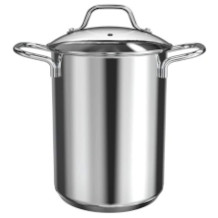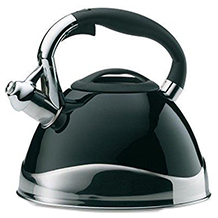Skillet purchasing advice: how to choose the right product
- The most important facts in brief
- Frying pans are available in aluminium, iron, stainless steel and copper. The most common are the aluminium and stainless steel models.
- Most frying pans today have a coating. A coating prevents food from burning in the pan.
- Iron pans without a coating need to be baked.
- There are special types of pans for preparing certain foods, for example wok pans, fish pans, grill pans and braising pans.
One pan is not enough
Alongside pots, cutlery and crockery, frying pans are part of the basic equipment of every kitchen. A frying pan is a metal utensil used for frying and braising food. While a single, inexpensive frying pan is sufficient to prepare simple dishes such as fried potatoes with fried eggs in a student flat, the demands on kitchen equipment often increase with income. A good frying pan set, with which even sophisticated dishes turn out well, is an investment that pays off. After all, a high-quality pan will give you many years of loyal service in the kitchen.
There are various dishes that turn out better when prepared in a special pan. For example, you prefer to fry fish in an oval frying pan that is adapted to the shape of the fish body. As a rule, these models have a less high rim. This makes it unlikely that the fish will fall apart when turned. Grill pans, on the other hand, have a corrugated inner bottom. Excess fat flows into the grooves and the grilled food gets the typical grill grate patterns due to the elevations. So if you cook at home regularly, it can make sense to have several pans for different uses.
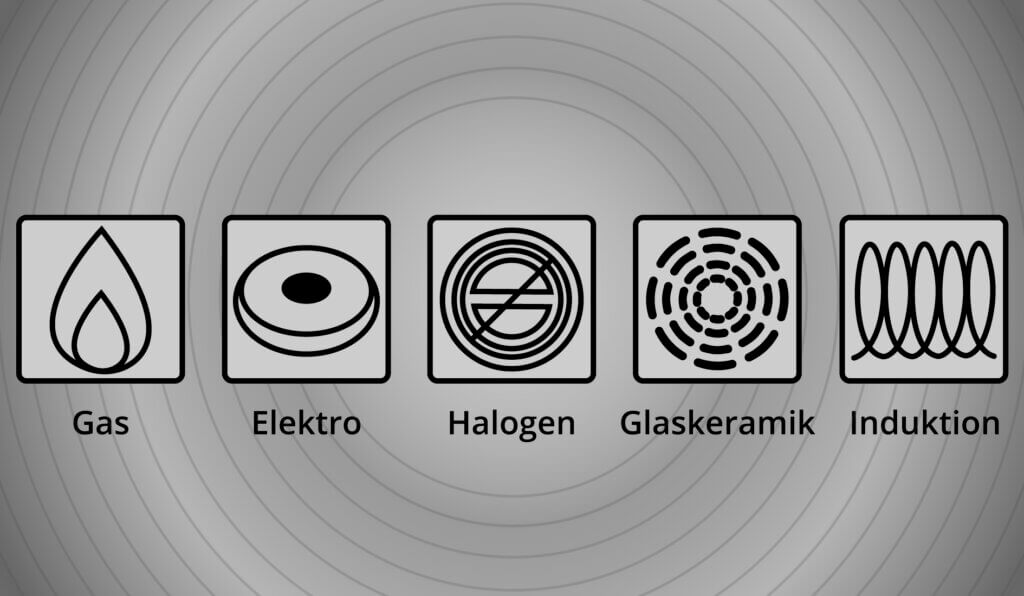
In the past, the choice of frying pans was very limited. They were made of only one material, and that was iron. New processing possibilities eventually brought pans and pots of different materials onto the market.
Pan material
Some dishes turn out better and easier if you cook them in a pan made of a certain material. For example, a Wiener schnitzel is most likely to succeed in a cast or wrought iron pan, which transfers heat ideally because of its weight and material.
Do not heat empty pans for more than three minutes
If aluminium pans are overheated, there is not only a risk of toxic fumes developing, but also of the coating coming off. Therefore, the Federal Institute for Risk Assessment (BfR) recommends never heating empty pans for longer than three minutes, because otherwise the critical limit of 360 degrees Celsius is quickly reached.
Why deformation of the bottom is problematic
Apart from gas cookers, where an open flame hits the bottom of the pan, a deformed pan no longer rests straight on hobs, ceramic hobs and induction hobs. Without a secure footing, the heat is not transferred efficiently. As a result, not only is a lot of energy lost during frying, food preparation usually takes longer. If the pan is too deformed, it will potentially no longer transfer enough heat and the dish will therefore be undercooked. At the latest then it is time for a new pan.
We present the different materials, aluminium, iron, stainless steel and copper, below and explain the advantages and disadvantages of each variant.
Aluminium
Pans made of aluminium are produced either by casting or by pressing aluminium plates, the so-called deep drawing. Aluminium pans are usually coated with a coating of enamel, ceramic or PTFE (polytetrafluoroethylene), colloquially known by the trade name Teflon from the company DuPont. A coating ensures that the aluminium does not react with the food and that a fried egg, for example, does not stick to the pan. Aluminium pans without a coating are no longer widely used.
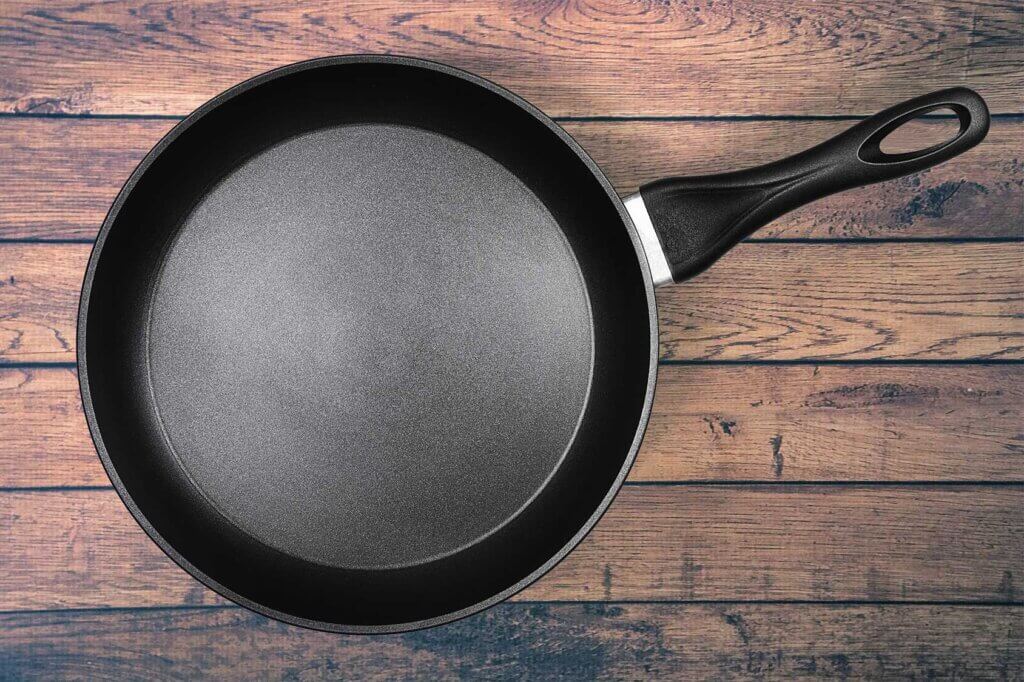
Cast aluminium pans, also known as cast aluminium pans, and aluminium press pans are among the most popular types of pans for several reasons: They are characterised by their low weight, which gives them an advantage in terms of handling. In addition, aluminium heats up quickly and transfers heat well. Frying pans of this type are easy to clean thanks to the coating. The comparatively low price is also a clear advantage of the aluminium versions.
Some manufacturers combine the advantages of different materials and embed a stainless steel layer in the aluminium or vice versa: this makes it possible to combine the advantages of both materials.
Aluminium pans are particularly suitable for
- gentle cooking and braising of all kinds of food,
- delicate foods like omelette,
- fish,
- vegetables or
- eggs.
Cheap, low-quality aluminium pans tend to warp more quickly; the bottom is then no longer flat. Due to the correspondingly smaller contact surface with the cooker, more energy is needed to cook the food.
Pro points
- Easy handling thanks to low weight
- Fast heating and good heat conduction
- Good value for money
- Easy to clean
Drawbacks
- Rapid deformation with inferior models
- Toxic vapours when heated too high, and
- The coating may peel off if heated too high
Iron
There are three types of production for iron pans: Iron pans, also called wrought iron pans, cast iron pans and carbon steel pans. These types are almost indestructible when properly cared for.
Iron pans come in both coated and uncoated versions. Uncoated pans must be baked before first use and then only hand-washed. Coated pans require less maintenance. However, the coating can be damaged by excessive heat and release toxic fumes.
If the coating is detached in parts, food will burn, just as with a non-coated frying pan. We highlight the properties of the three types of iron skillet below.
Wrought iron pan
Wrought-iron pans are characterised by high durability. These models contain less carbon than the cast versions. Therefore, they are easier to shape into the desired form. This applies to both cold and hot forged models.
The bottom of a forged pan is thinner than that of a cast iron pan. This ensures that the heat cannot spread evenly: The centre of the pan bottom is then often hotter than the rim. On the other hand, a wrought iron pan is lighter than a cast iron pan. This is an advantage because it is easier to swivel, for example when preparing scrambled eggs or omelettes.
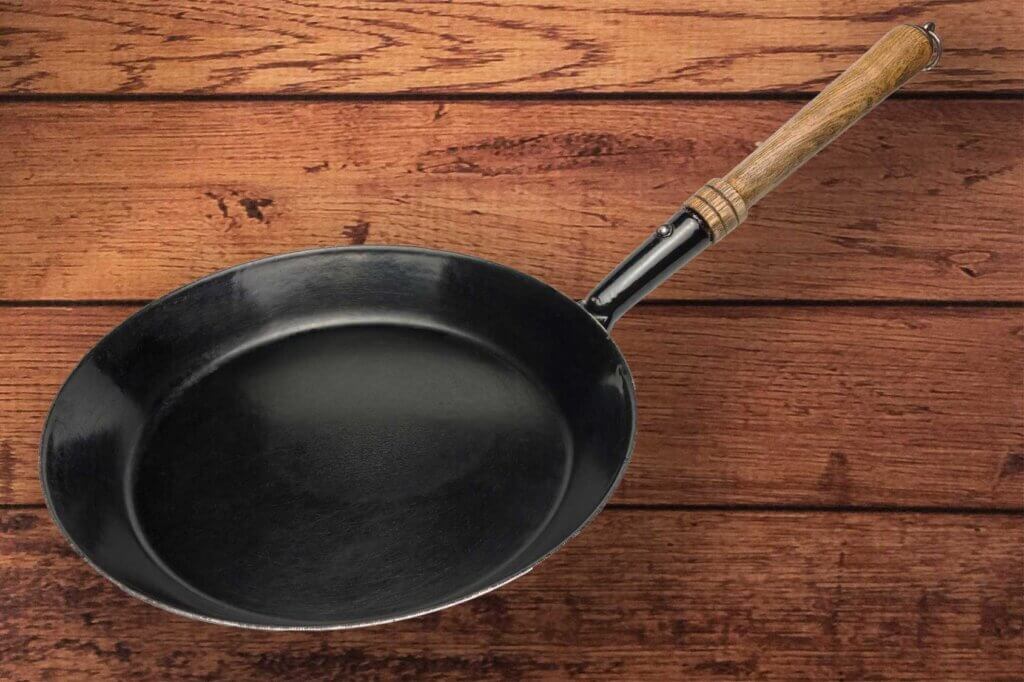
Due to the comparatively low material thickness, the bottom of wrought iron pans tends to permanently warp when heated unevenly. Therefore, make sure that the pan is always centred on the hob and never use a hob that has a smaller diameter than the bottom of the pan. This is especially true for induction hobs. They heat the pan particularly quickly, which makes it easier for large temperature differences to occur in the material.
Pro points
- Long durability
- Lighter weight than cast iron pans
- Sharp browning possible
Drawbacks
- Poor temperature distribution
- Susceptible to warping of the base
- High maintenance if uncoated
Cast iron pan
Cast-iron pans are those nostalgic-looking, heavy cooking utensils that were already used in grandmother’s time. Compared to forged iron pans, they are heavier, which makes them somewhat less comfortable to handle.
Cast iron pans are particularly durable and do not deform even under high heat. This is due to the manufacturing process. Unlike forging, the material does not have to be very elastic when iron is cast. Therefore, cast iron pans are made of dimensionally stable iron with a high carbon content of two and a half to four percent.
In addition, the thicker base compared to wrought iron pans ensures even heat distribution. In this way, you achieve an identical cooking result in every area of the pan.
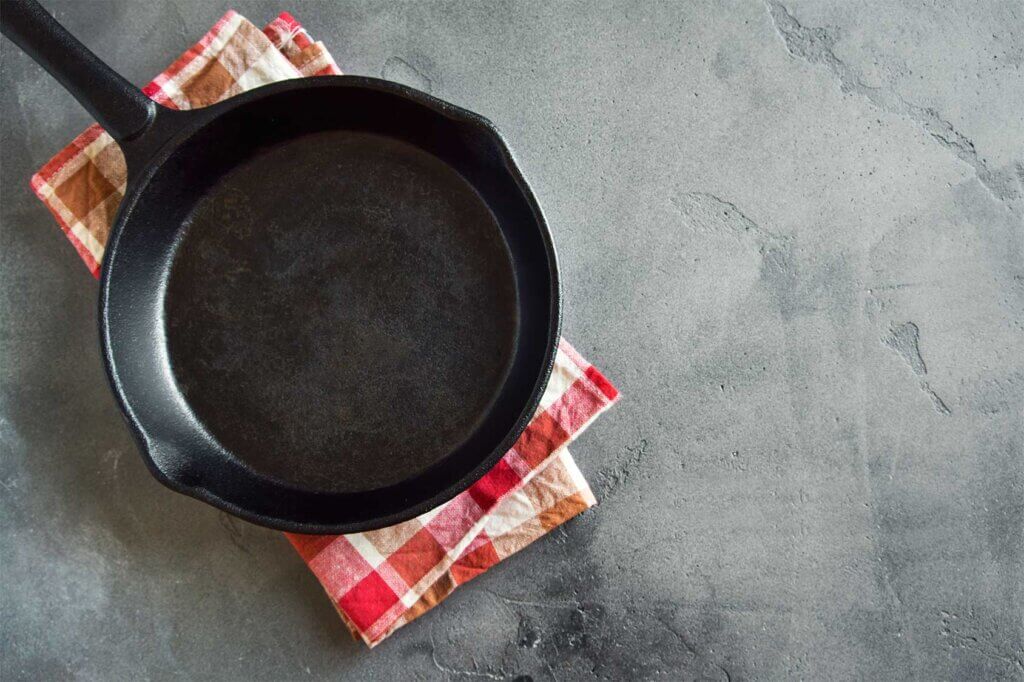
Pro points
- Often lifelong durability
- Deformation unlikely
- Even temperature distribution
- Sharp browning and roasting aromas possible
Drawbacks
- Difficult handling due to higher weight
- High maintenance if uncoated
Stainless steel
Stainless steel is a rustproof alloy. It consists mainly of iron. Chromium and nickel are also added. The material does not react with food, is hard and very easy to clean. Heat-conducting materials such as copper or aluminium can also be built into the pan core. This improves the thermal properties of the cooking utensils.
The models are suitable for preparing both meat and vegetables. They are durable and well suited for bringing out roasted flavours. However, delicate food sticks easily. Incorrect use can damage the surface of stainless steel pans, causing them to corrode. For example, the pans are sensitive to salt. For this, you can put stainless steel pans in the dishwasher, as long as the manufacturer labels them as dishwasher-safe or dishwasher-safe. In contrast to iron pans, it is usually not necessary to bake them because stainless steel has very fine pores.
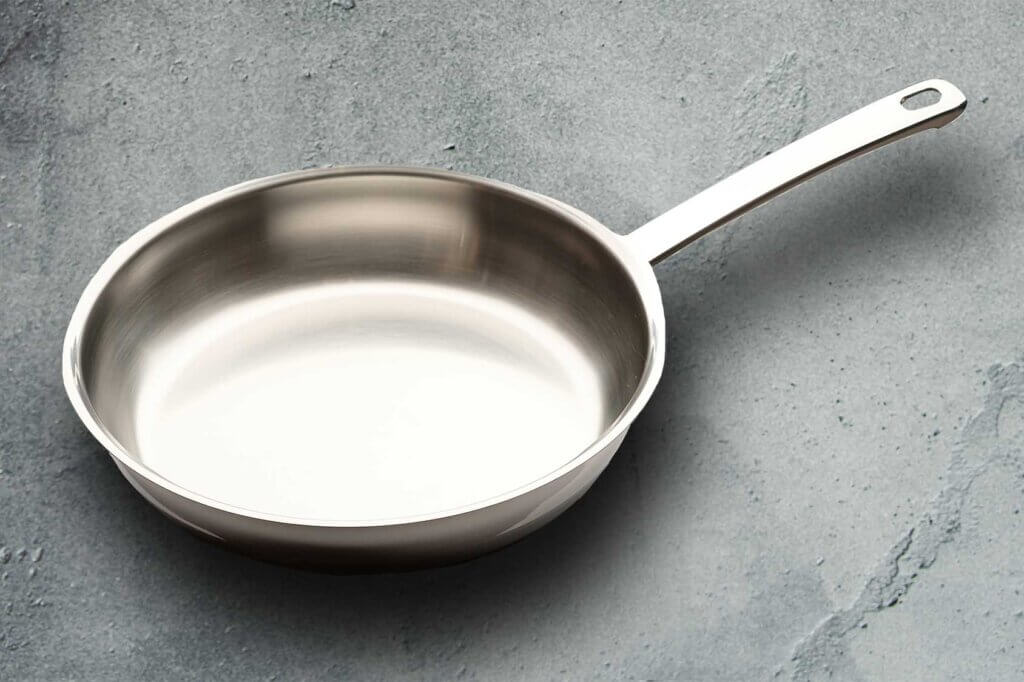
Pro points
- Longer durability compared to aluminium pans
- Easy to clean
- Sharp frying and development of roast aromas possible
- Often dishwasher safe
Drawbacks
- Delicate food sticks easily
Copper
Copper is a comparatively soft yet durable metal whose properties are also highly valued for frying pans. For pan production, pieces of copper are punched out and then pressed into shape. Copper pans are characterised by very good thermal conductivity, extremely even heat distribution and rapid heating. They also cool down quickly after use, so users can clean them quickly. Since pure copper pans are lighter than other types of pans, they are easy to handle.
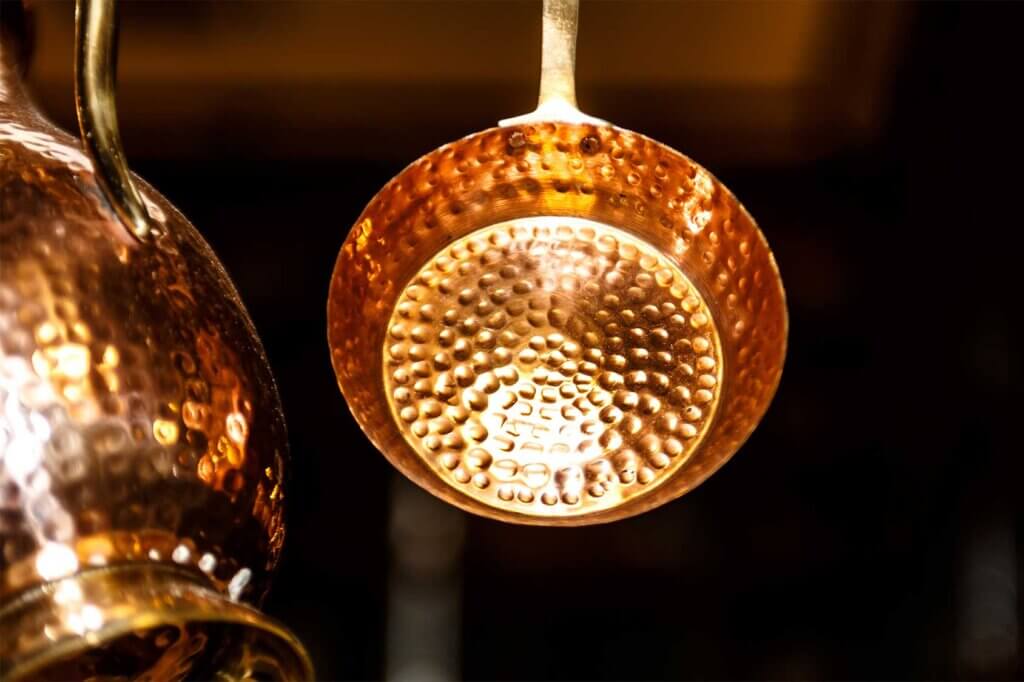
What copper pans are suitable for
Copper pans can be used to cook both juicy steaks and crispy fried potatoes.
However, copper pans also have a number of disadvantages. Compared to other types of pans, they are very expensive. With prices starting at 300 euros, but also considerably higher, these cooking utensils are primarily suitable for the catering trade or for home cooks who appreciate the advantages of rapid temperature changes and can afford such a copper pan. Copper pans are sometimes advertised at much lower prices. These are usually pans that have only a small copper content or are coated with copper.
There is another problem with copper pans: Their surface tends to oxidise and scratch quickly. In addition, copper pans do not work on induction cookers without an additional coating or a special adapter. Furthermore, they can release copper components into the food. To prevent this, many copper pans have a tin or stainless steel coating that lowers heat conductivity while protecting the food.
Pro points
- Very good thermal conductivity
- Even heat distribution
- Fast heating and cooling
- Good handling thanks to low weight
Drawbacks
- Considerably more expensive compared to other materials
- Tends to oxidise and scratch quickly
- Special coating or adapter required on induction cookers
- Sometimes copper leaks into food
Coatings with different properties
Before buying, many prospective customers ask themselves whether they should choose a coated or an uncoated model. Coated pans make frying easier. Thanks to the non-stick effect, nothing sticks and cleaning is also very easy. This makes a coated pan the right choice, for example, if you want to fry a perfect fried egg in the morning that won’t stick to the bottom of the pan. The coating also protects the surface from mechanical damage and thus helps you to enjoy your pan for a long time.
However, there are also situations in which an uncoated pan is the kitchen utensil of choice. Professional and amateur chefs use them for frying, for example. When frying, caramelised residues remain on the bottom of the pan. When deglazed with wine, stock or cream, these dissolve and give the dish a particularly intense flavour. Uncoated stainless steel pans are best suited for this.
Properties such as perfect temperature distribution and crispy searing can only be achieved without a coating. These pans need a so-called patina, i.e. they have to be baked in. You can read more about this in the advice section. When it comes to coatings, a distinction must be made between PTFE (Teflon), ceramic and enamel.
In the meantime, however, cast and wrought iron pans with enamel coatings are becoming increasingly popular. Here, there is no need to burn in the enamel. In addition, many users turn up their noses at the thought of never being able to clean a pan with washing-up liquid. This is possible with enamelled pans. Use and cleaning are less complicated. Therefore, these models could also be called iron pans for the general public.
Coatings are resistant to different temperatures. In general, you should read the manufacturer’s product instructions carefully to find out whether or up to what temperature you can put a pan in the oven, for example.
PTFE (Teflon)
The plastic polytetrafluoroethylene (PTFE) is the best-known and most widely used non-stick coating. Many know it under the trade name Teflon. Only the US developer DuPont is allowed to market products under this name. All other manufacturers refer to the coating as PTFE.
The material is characterised by its excellent non-stick effect, which significantly reduces the cleaning effort. However, PTFE is susceptible to scratches, which is why you should never use knives, spoons or forks, but rather wooden or plastic kitchen cutlery for cooking. PTFE should not be exposed to too high temperatures, which is why heating an empty pan with this coating is not recommended. Therefore, it is also not advisable to use it in the oven at high temperatures. Above a temperature of 360 degrees Celsius, dangerous chemical decomposition processes can occur. Due to the good non-stick effect, you can prepare dishes with particularly little or even no fat.
Pro points
- Excellent non-stick properties
- Easy cleaning and care
- Low-fat preparation possible
Drawbacks
- Susceptible to scratches
- Damage possible at too high temperatures
- Not suitable for oven
Ceramic
Ceramic coatings are characterised by a scratch-resistant, smooth surface that is heat-resistant up to 400 degrees Celsius. Therefore, you can sear food hot. However, you must make sure that you use highly heatable oil. Cold-pressed olive oil has a low smoke point of just over 100 degrees Celsius. Therefore, it is generally not suitable for frying. If it gets too hot, carcinogenic substances are formed. In addition, the oil becomes resinous. This can cause the coating to stick together and thus destroy the pan. You should also heat these pans slowly. Rapid temperature fluctuations, for example on an induction cooker, can attack or destroy the coating.
Pro points
- Scratch-resistant coating
- Heat resistant up to 400 degrees Celsius
- Mostly ovenproof
Drawbacks
- Loss of non-stick effect with overheated oil
- Damage possible due to strong temperature fluctuations
Enamel
The properties of frying pans that have an enamel coating are similar to those of ceramic-coated models. However, they are less resistant to impacts and scratches and more susceptible to extreme temperature fluctuations compared to ceramic cookware. The non-stick effect is somewhat less than with PTFE-coated pans. On the other hand, enamel pans can also be used at higher temperatures in the oven. However, as with all types of pans, you must make sure that the handle is designed for these high temperatures or can at least be removed.
Pro points
- Less sensitive to scratches than PTFE
- Can be used at high temperatures
- Mostly ovenproof
Drawbacks
- More susceptible to scratches than ceramic
- Damage possible due to strong temperature fluctuations
- Less non-stick effect than PTFE
Different types of pans for special dishes
In addition to classic round frying pans, there are a number of other models that are suitable for special purposes or for preparing special dishes: We list some special models below.
Serving pans
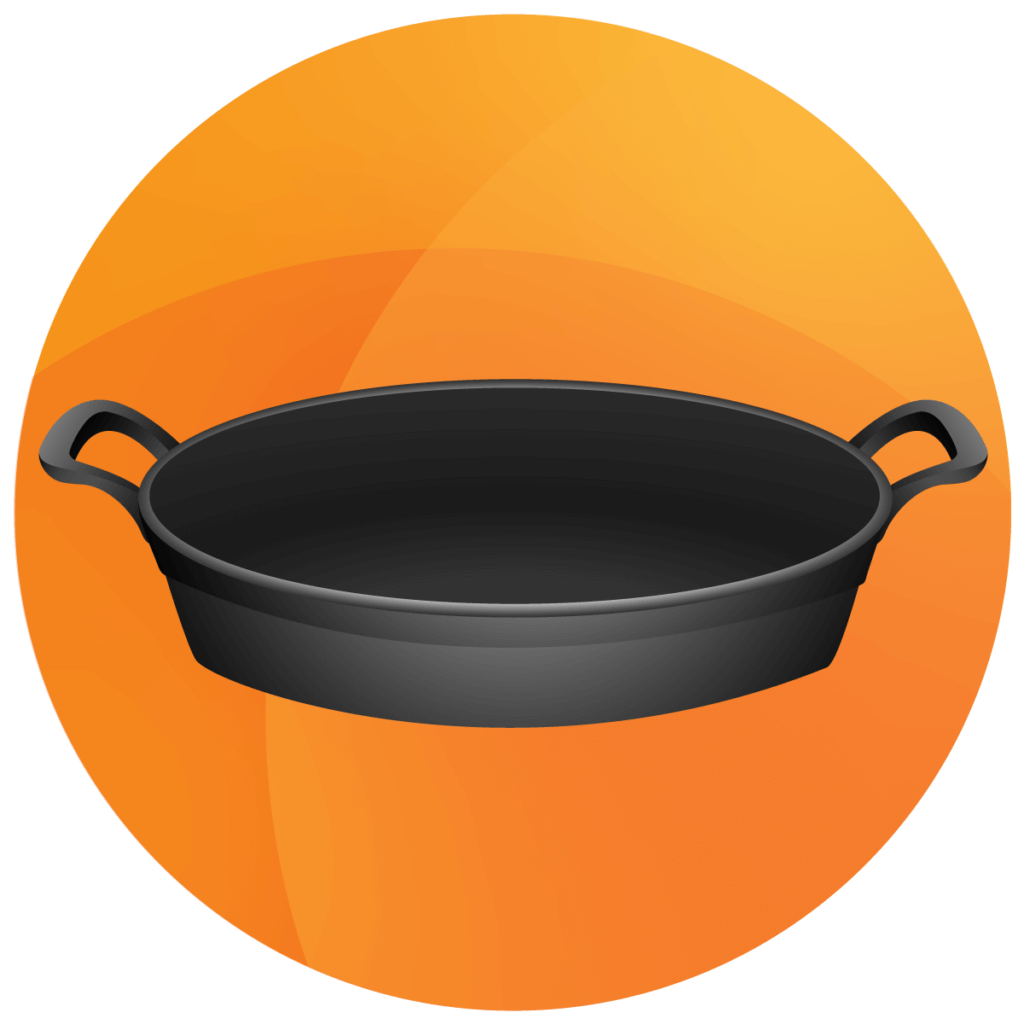
Serving pans have a flat edge that extends outwards. Instead of a handle, they have two heat-insulated handles opposite each other, which allow you to quickly bring the dish you have just conjured up from the cooker to the dining table. The wide opening allows those gathered at the table to catch a direct glimpse of the treat.
Roaster
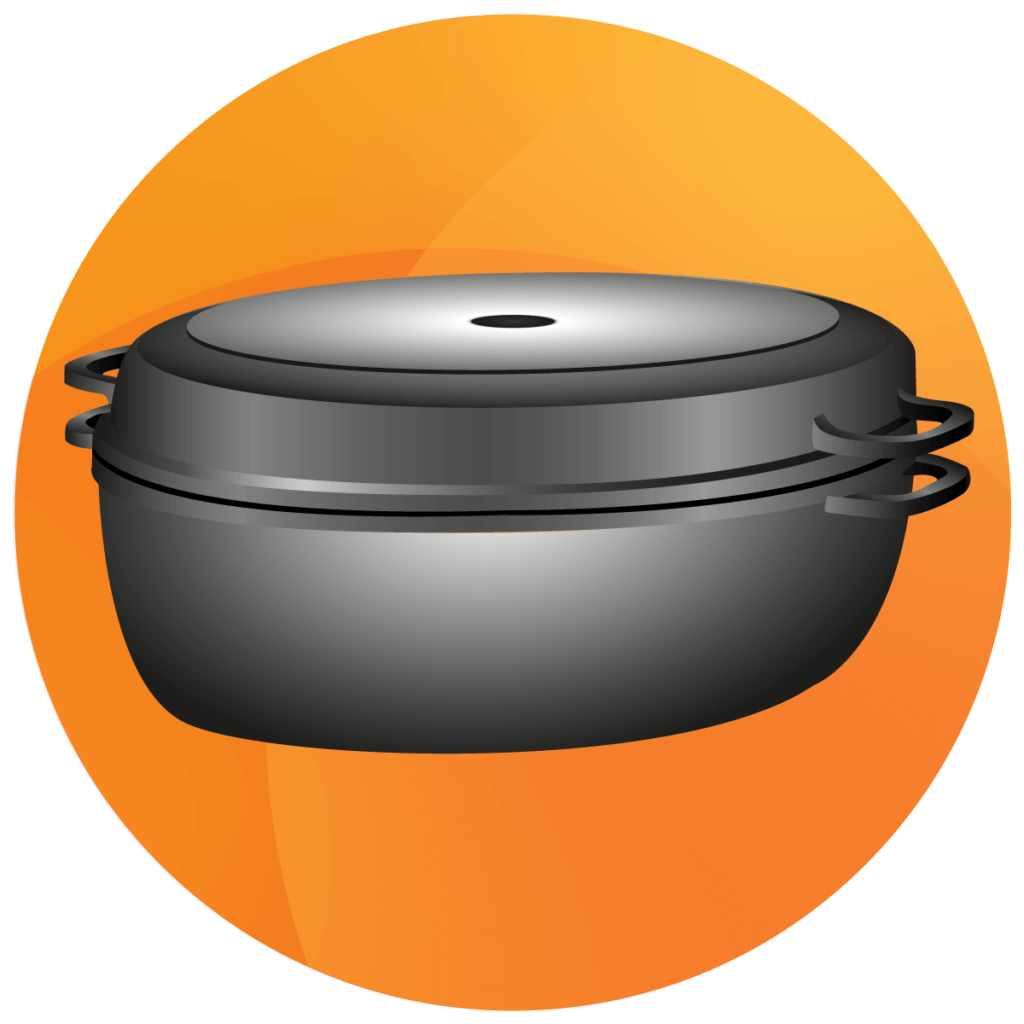
A roaster, also called a roasting pan, has a larger diameter and a higher filling volume. Some of these pans are rectangular and require a special hob adapted to their size. If necessary, they can also be used over two individual hobs, but this is less energy-efficient and carries the risk of warping during prolonged use.
Fish pans
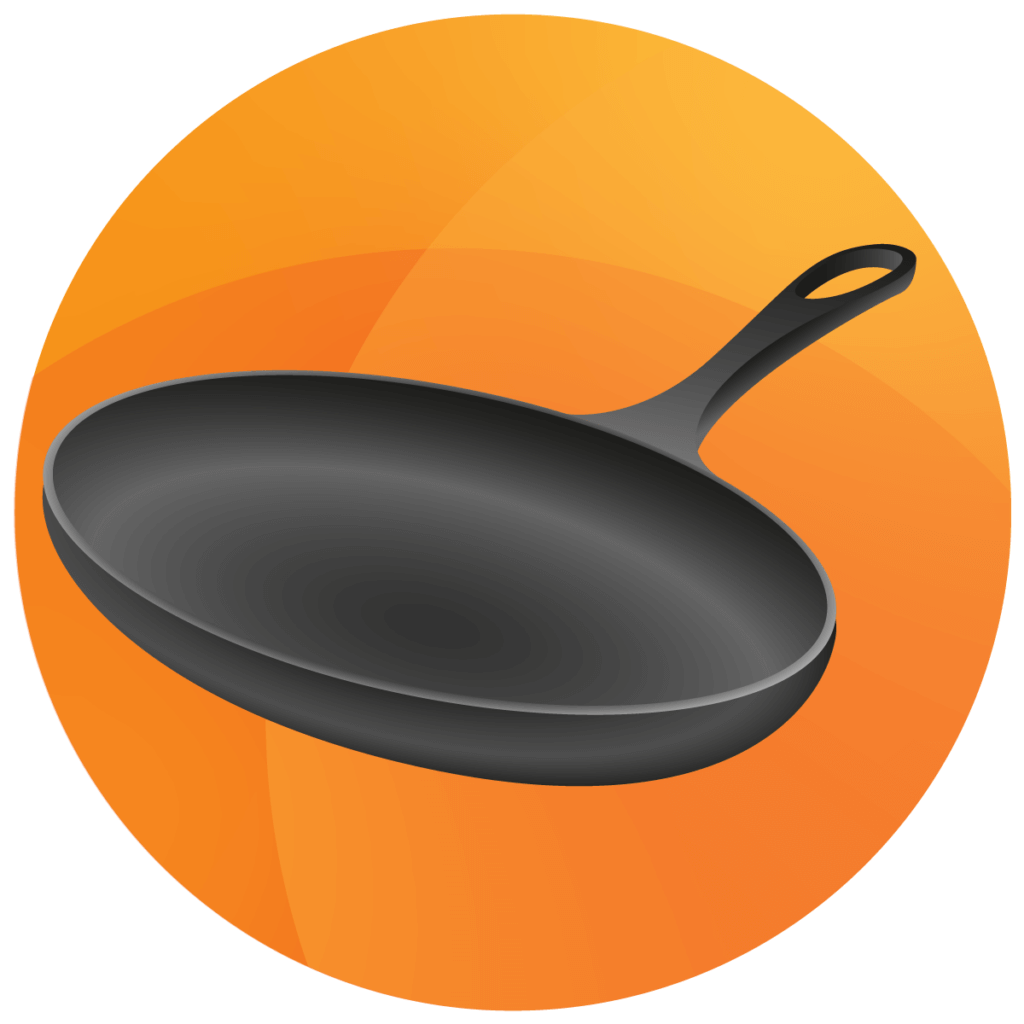
If you prepare fried fish frequently, you may appreciate the advantages of a specially designed fish pan. Many models are oval and therefore perfectly suited to the dimensions of sea and ocean creatures. A usually shallower pan rim makes it easier to turn over, preventing the fish from falling apart.
Braising pans
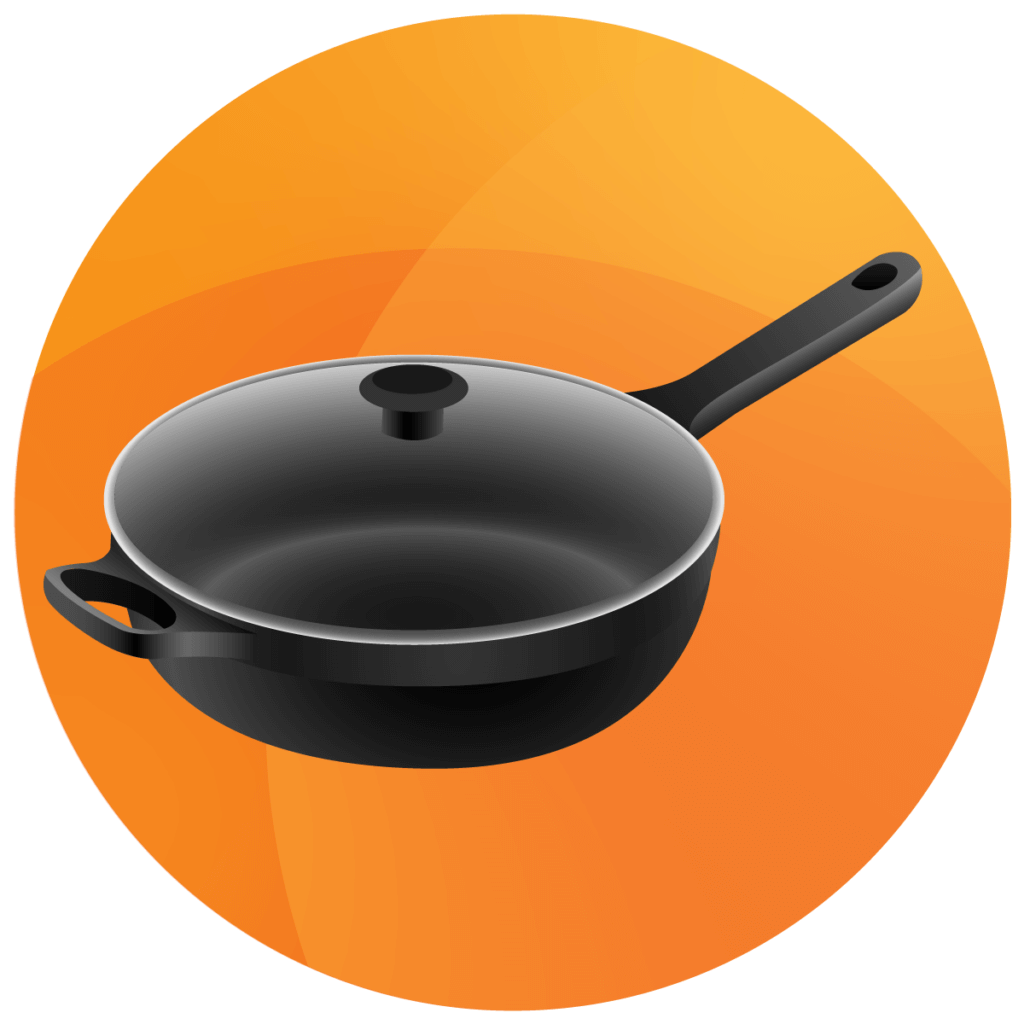
Braising pans with a raised rim are suitable for preparing vegetable and meat dishes where the ingredients should cook slowly in the broth. With this method of preparation, the meat remains particularly juicy and the vegetables retain a particularly large number of nutrients.
Grill pans
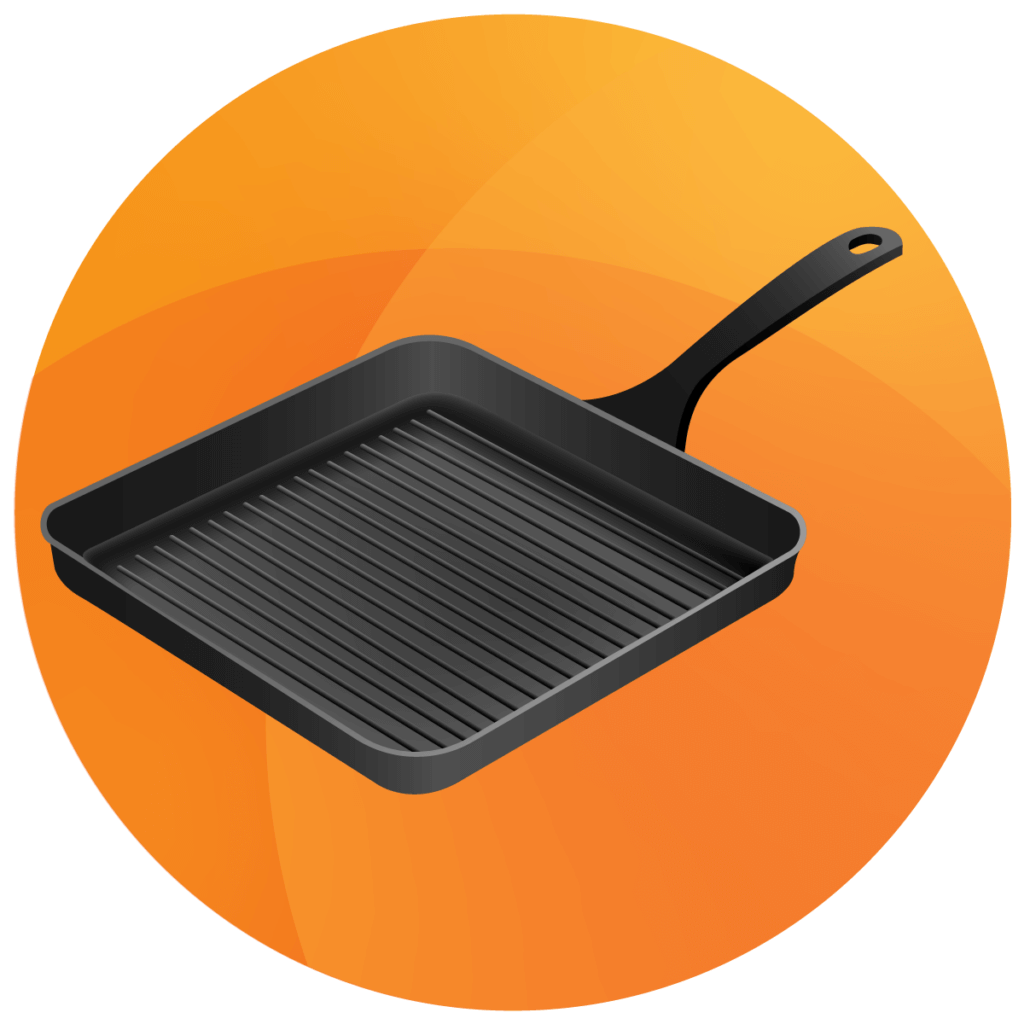
Especially when it is still a little too cold for a barbecue on the terrace, a special grill pan, also called a steak pan, can contribute to the perfect preparation of steaks and sausages at home. Gravy and fat collect in the spaces between the fluted bottom, which prevents watering. The meat roasts on the hot roasting sticks and gets its classic brown horizontal stripes.
Woks
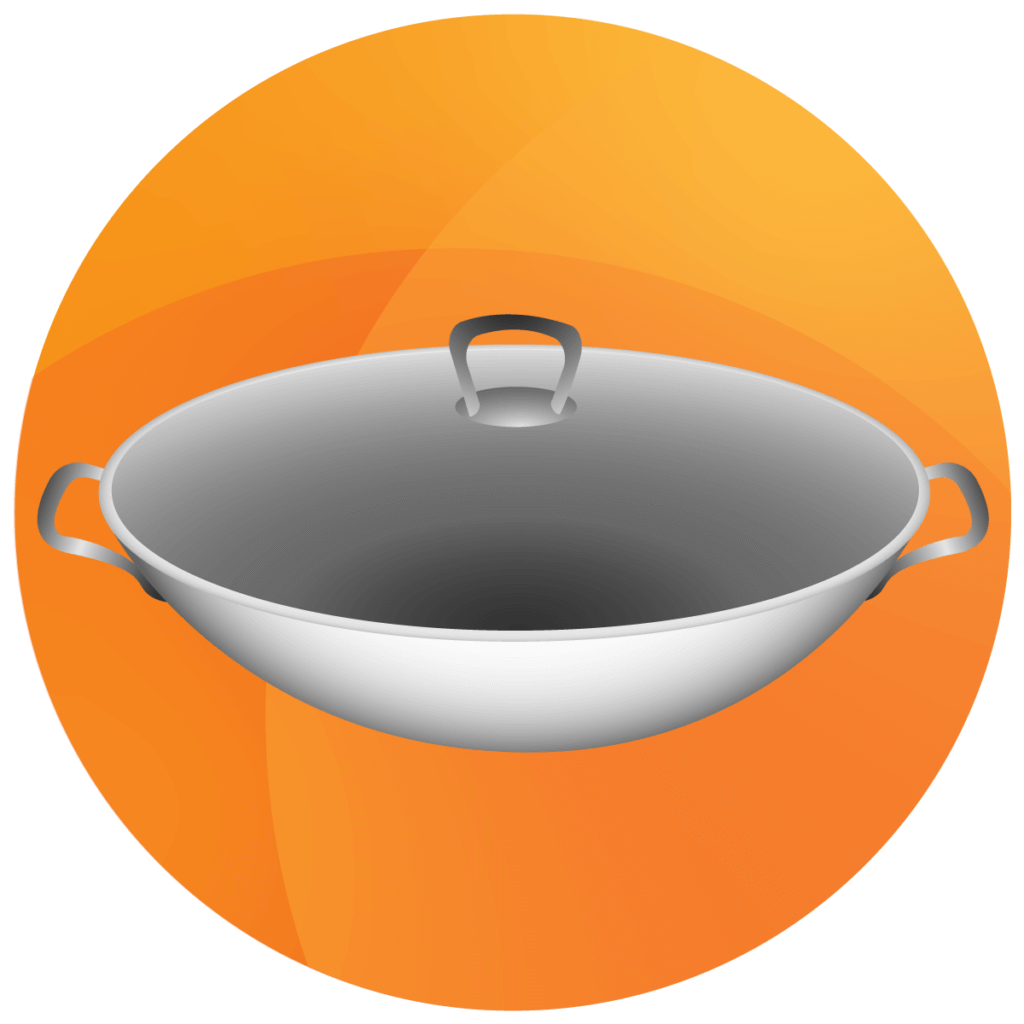
Woks or wok pans originally come from Asian cuisine. You can use them to prepare fresh and healthy meals quickly. The unique selling point is the raised shape. The thermal properties allow low-fat preparation of crisp vegetables and juicy meat. In addition, there is enough space to swivel the pan. This makes Asian curries, among other things, a perfect success.
Further purchase criteria
In addition to the materials, coatings and pan types listed, there are other criteria that can influence your purchase decision. We list the most important ones.
Price
Good universal pans do not have to be expensive. The price depends largely on the material. Coated aluminium pans are comparatively cheap. Forged iron pans are a little more expensive because of the craftsmanship involved. Cast iron pans also stand out slightly in price due to the processed material. Comparatively expensive and unaffordable for most private users are often pan models made of copper.
Weight
In general, heavier models have a better stand on the cooker. However, they should not be too heavy, so that they can be lifted and swivelled with one hand. Common aluminium pans have a comparatively low weight. Cast-iron pans can be more of a problem, as they are uncomfortable to handle with one hand.
Shape
Very few hobs of the different types of cookers are equipped with square cooking zones. To ensure that the heat is optimally distributed, it is therefore advisable to tend towards round pan models. Grill pans, on the other hand, are usually square, so that the food can be placed next to each other and the cooking surface is enlarged. With many cooker models, however, this also means that there is not enough room for the whole pan on the hob. Some areas then remain cold. In the worst case, the bottom of the pan can become warped.
Diameter
An important criterion when buying a frying pan is the diameter. The measurement refers to the upper edge of the pan. The base diameter is usually much smaller. For a pan with a diameter of 24 centimetres, the base diameter is 16.5 to 20 centimetres. It is generally advisable to have several pans in different sizes: This way you can cook a meal for several people as well as a single fried egg for breakfast. The diameter of the base of the pan should always match the size of the hob. If the plate is smaller, there is a risk of the pan deforming.
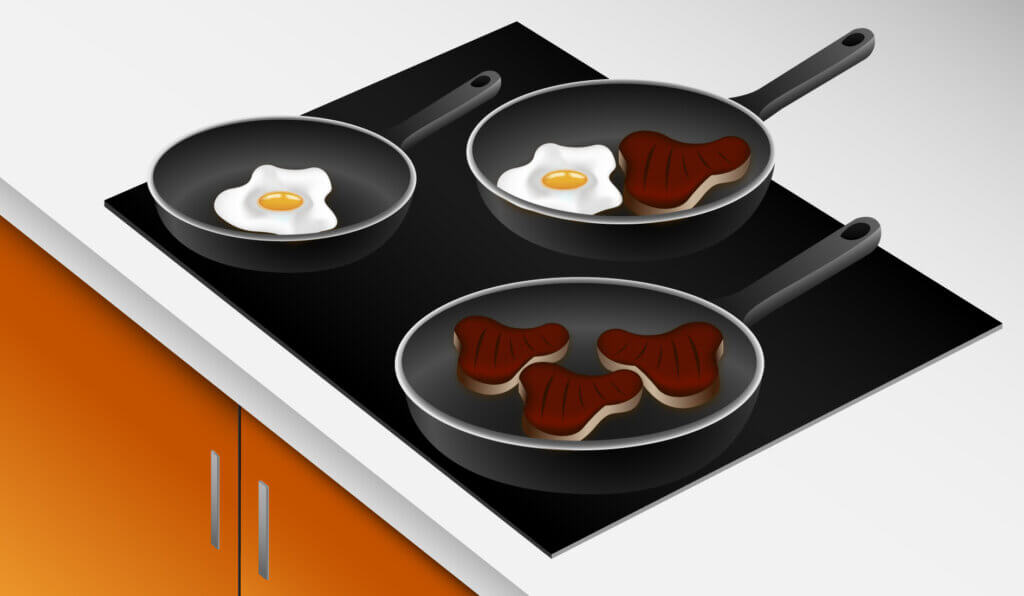
Rim height
The rim height of the frying pan ultimately determines how much volume of liquid or sauce you can prepare in the pan. While a piece of meat that is to be seared can easily exceed the height dimensions, with liquid ingredients you must ensure that there is enough room to stir the food. A high rim provides some splash protection, whereas a low rim makes it easier to handle a spatula. An optional pouring rim makes pouring easier, for example into a bowl or sauce boat.
Lid
A lid is a great advantage, especially when heating or braising dishes, because less heat is lost. Some pans are sold with lids. But it is also possible to buy a universal lid made of glass, copper, cast iron, aluminium or stainless steel. The diameter refers to the upper edge of the pan.
Handle
When choosing a pan handle, make sure that it is sturdy and fits tightly. Screw handles should be tightened from time to time. Remember that plastic and wooden handles are not ovenproof at high temperatures. Removable handles are particularly practical: this way you can also put your pan in the oven to bake dishes. In addition, storing it without a handle saves space in the kitchen cupboard.
Care tips: Use, clean and burn in
To ensure that you can use your pan for as long as possible without any restrictions, you should follow a few care tips. While you should clean coated pans with warm water and washing-up liquid after they have cooled down, uncoated cookware made of iron or stainless steel is a little more complicated to care for.
How do I bake iron pans?
First of all, it depends on whether you have a pan made of raw cast iron, i.e. without a coating, or a model that has a coating. The former need to be baked in order for the oil to decompose and form a non-stick coating, the so-called patina. It also protects cast-iron pans from rust. Some manufacturers, including Lodge, supply cast iron pans from their range already pre-baked. Otherwise, you should heat highly heatable oil such as rapeseed oil or linseed oil until it begins to smoke. Do not use olive oil, as this cannot be heated to such a high temperature. As soon as the mixture smokes, you should discard it. Then rub the pan with a little oil using a cloth.
How do I clean an iron pan?
It depends on whether you have a coated or an uncoated pan. Uncoated but already baked iron pans are very easy to clean. After use, remove food residues with some kitchen paper. If this does not get the frying pan completely clean, leave detergent-free warm water in it for about half an hour. Afterwards, you can easily remove encrustations with a soft sponge. However, cooking utensils should not be put in the dishwasher. The aggressive detergents would have a negative effect on the non-stick effect. After the patina has disappeared, the iron pans may rust. Clean coated pans with warm water and a little washing-up liquid. As a rule, you should not put these pans in the dishwasher either, as the coating may suffer. Follow the manufacturer’s instructions. In any case, hot or residually hot pans should never come into contact with cold water to avoid the risk of damage.
Do not place a wrought iron pan on an already hot cooker.
Wrought iron pans are suitable for cooking delicate foods at moderate temperatures as well as for searing steaks at high heat. However, you should avoid placing the cold pan on an already fully heated hob. It is better to heat the pan gradually.
Can a cast-iron pan be put in the dishwasher?
Better not: There is only a slight risk of iron pans warping. However, uncoated models lose the patina gained by baking, the non-stick layer that protects food from sticking and burning. It is advisable to remove food residues with a piece of kitchen paper. Stubborn stains should be soaked in detergent-free water and then removed with a soft sponge. Enamelled cast iron pans risk losing their shine in the dishwasher. If you wash them by hand, you can use washing-up liquid. In all cases, never bring a hot pan into direct contact with cold water, but allow it to cool down first to avoid damage.
Do not slide cast-iron pans on ceramic hobs
Cast-iron pans should not be pushed on ceramic hobs, also called glass-ceramic hobs or Ceran hobs according to the brand name. The cooking utensils have a high inherent weight. In addition, the underside is a little rough. They can therefore leave scratches when you move them. If you lift the pans carefully, you will avoid scratching or cracking the hob.
Is a cast iron pan suitable for induction?
Robust cast iron pan models are great for bringing out roasted flavours and are suitable for all hob types. Non-coated models without a wooden handle can even be placed in the oven. They can also be used on gas cookers, electric cookers, induction cookers and even over an open fire. Enamelled models, on the other hand, should not be exposed to temperatures above 260 degrees Celsius or to open flames on the side walls.
At what temperatures is it best to use a cast iron pan?
Cast iron is an excellent conductor of heat and also stores heat very well. The most effective way to use such a frying pan is at medium temperature. Depending on the type of cooker, you should heat the hotplate completely for two to five minutes. Then switch to the medium setting to conjure up tasty dishes. You should not cook permanently on the highest setting with a cast iron pan. The lower temperature levels are perfectly adequate because of the good heat transfer.
How do I clean a copper pan?
Copper is a very soft material that can be damaged when cleaned in the dishwasher. Therefore, we recommend cleaning by hand with a non-abrasive agent. Optionally, you can use a suitable polishing paste to maintain the shine.

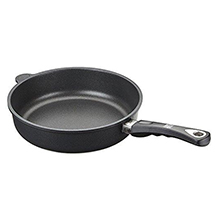
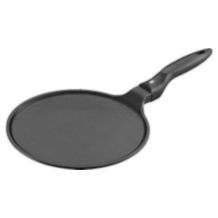
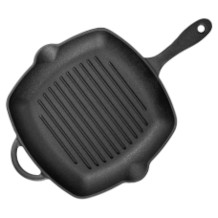
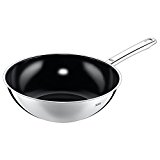
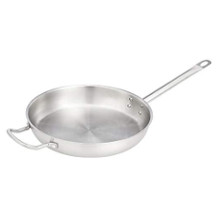
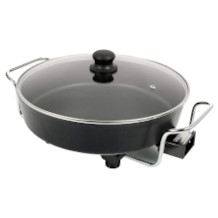
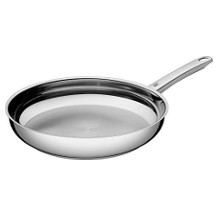
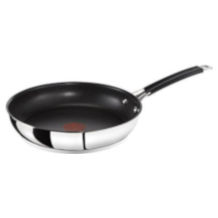
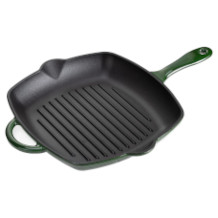
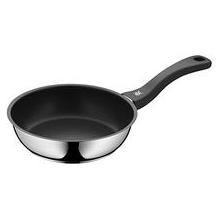

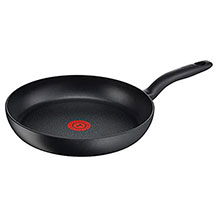
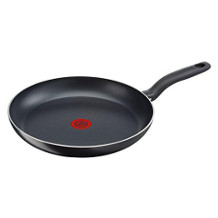
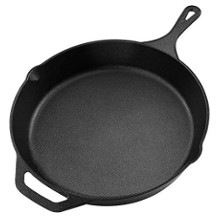
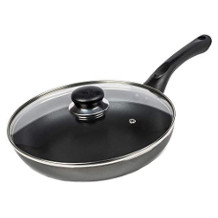
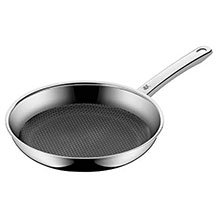
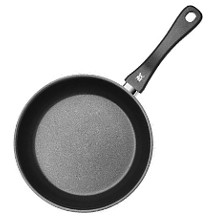

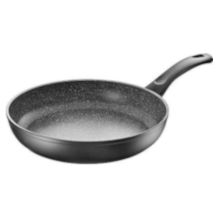
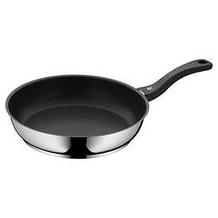
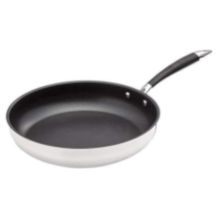
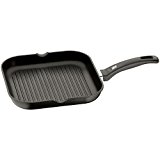
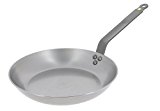
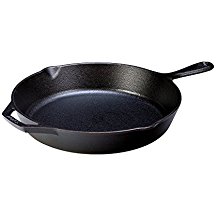
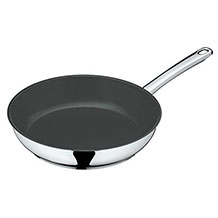



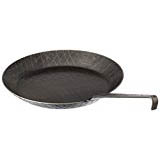
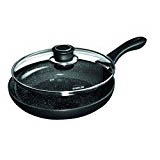
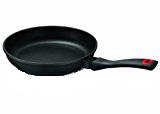
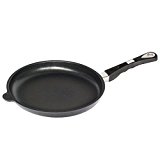
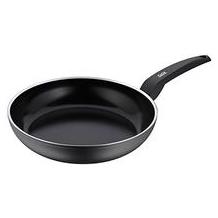

 28 reviews
28 reviews

